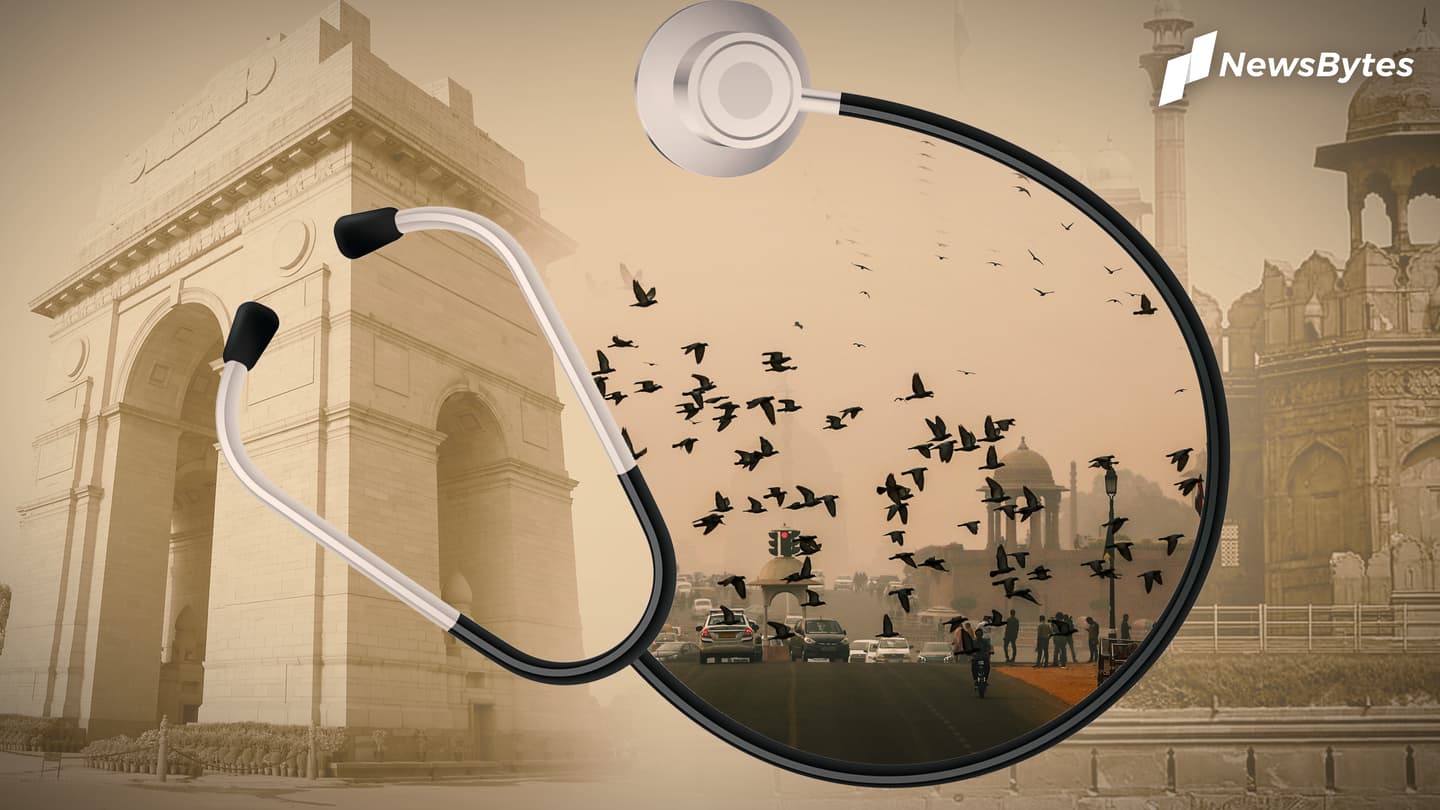
Delhi is now India's coronavirus capital: What all went wrong
What's the story
In numerous media interactions and interviews, Chief Minister Arvind Kejriwal stated Delhi won't become New York, the global epicenter of coronavirus, or Mumbai for that matter, where the largest number of cases of COVID-19 were concentrated in India.
His claims were demolished on Wednesday when Delhi surpassed Mumbai in the total number of cases.
So, how did Delhi get here? Let's find out.
Looking back
When lockdown started, Delhi had 606 cases, 10 deaths
Surprisingly, Delhi wasn't one of the major cities where the initial cases were reported from. Kerala, Maharashtra, Tamil Nadu, were the states which posed a concern to authorities.
On March 25, when the nationwide lockdown was imposed to curb the spread of the disease, Delhi had 606 cases and 10 deaths.
Cut to three months later, Delhi now has 73,780 cases and 2,429 deaths.
Data
Delhi has been setting new records almost daily
Since June 19, Delhi has been logging 3,000+ cases almost daily.
On June 23, Delhi reported a total of 3,947 cases, the largest for any city in the world on that day.
Before that, the steepest single-day rise for any state was in Maharashtra, from where 3,874 cases were reported on June 20. Maharashtra's population is five times that of Delhi's.
Rate
Mortality rate also saw a rise in Delhi
While Delhi managed to contain the mortality rate for the most part of May (it was 1.59% on May 20), the situation became grim in the following weeks. The rate is now close to 5.7%.
So how did Delhi succumb? Dr. Giridhar R Babu, Head of Lifecourse Epidemiology at the Public Health Foundation of India, blamed the "non-observance" of precautions for this catastrophe.
Quote
"Delhi took the precautions frivolously"
"In close-contact settings, Japan made it mandatory for everyone to wear masks. Growing evidence shows that the mandatory use of masks can alone reduce the transmission, even without a lockdown, to a great level. But that hasn't been the case in Delhi," he told Newslaundry.
Reasons
Merely shutting down containment zones wasn't enough, felt another expert
Similarly, Indranil Mukhopadhyay, Professor of Public Health at OP Jindal Global University and co-convener of Jan Swasth Abhiyan's Delhi's wing, said citizens weren't rigorously screened at containment zones.
He explained if there are two cases in a slum of 1,000 people, shutting it down won't help.
"You also need to test 1,000 people living there as contact-tracing is difficult in dense neighborhoods," he said.
Prediction
The situation is grim, the future looks bleaker
Despite the lockdown, suspension of public transport, Delhi is besieged with coronavirus cases. And, experts believe it will get worse from here.
By its own admission, the Delhi government expects the number of cases to reach 5.5 lakh by July-end.
Dr. Arvind Kumar, Chairperson of the Center for Chest and Lung Transplantation at Sir Ganga Ram Hospital, called the situation "frightening".
Quote
The number of cases are increasing rapidly
"At present, the numbers are increasing very rapidly and the problem with these infectious diseases is that as the infected pool in the society increases, the number of cross-infection occurring from that infected pool also increases and multiplies," Dr. Arvind Kumar said.
Beds
Moreover, confusion about beds availability hasn't subsided yet
More worryingly, the earlier claims of the Delhi government that there are enough beds have been ripped apart.
In fact, on Thursday, Delhi High Court had to direct the state and federal governments to tighten the noose around "adamant" hospitals which aren't revealing real-time data about the number of beds available.
RML, GTB, Apollo, and Saroj Hospital were accused of withholding data.
Quote
Court wondered why government officers can't see the gap
"Your (Centre and Delhi government) officer must be strict. You replace your officers if they have too much friendship with hospitals. Either change your officer or we will do it. What the amicus has shown, your officers are unable to see," the bench fumed.
What's being done
Delhi started focusing on infrastructure extremely late
Dealt with a surge of cases, Delhi is now working towards ramping up medical infrastructure, something which must have been done during the lockdown.
A temporary hospital in Chhatarpur, with over 10,000 beds, is being set up and would be ready by July first week.
This decision was taken after Home Minister Amit Shah stepped up to handle the crisis.
Plans
Now, government plans to rope in medical students for help
Separately, to fill the dangerous staff crunch, the government may hire final-year postgraduate students as doctors. Final year undergraduate and post-graduate nursing students could be deployed at hospitals too. Reportedly, Delhi has nearly 18,000 doctors and 43,800 nurses.
However, some experts dismissed these "band-aid" solutions.
RDA General Secretary, AIIMS, Dr. Srinivas Rajkumar T. asked the government to come up with a long-term plan.
Opinion
Delhi is on the brink, citizens can't afford lackadaisical attitude!
Terming Delhi's situation miserable would be a gross understatement. The citizens are suffering, and the fact that Centre and AAP continue to bicker doesn't help, either.
The unlocking phase has clearly not done any good.
While citizens look towards governments for help, it's time they realize taking precaution is their only weapon during this pandemic.
The system has collapsed, they have to remain alert.